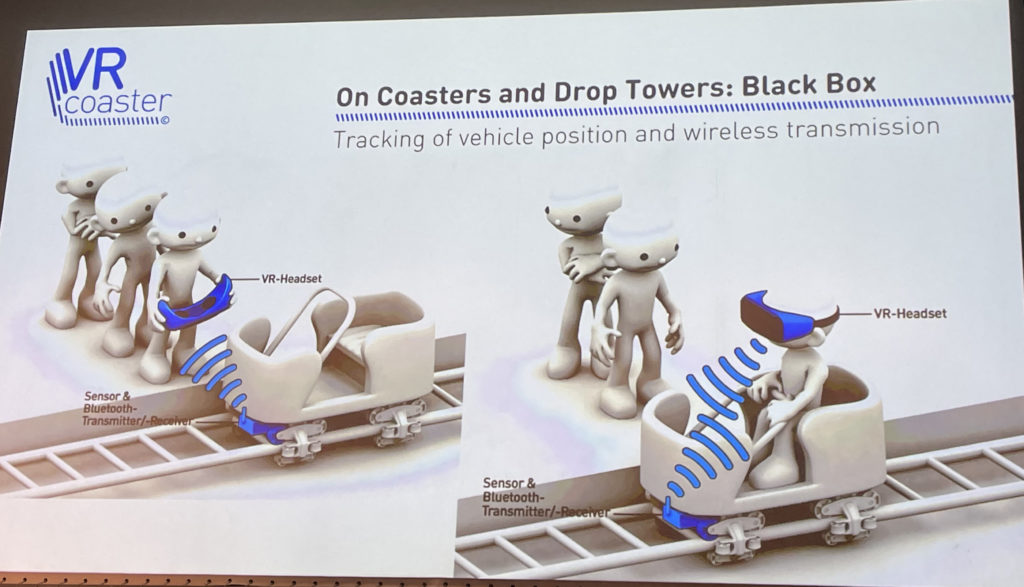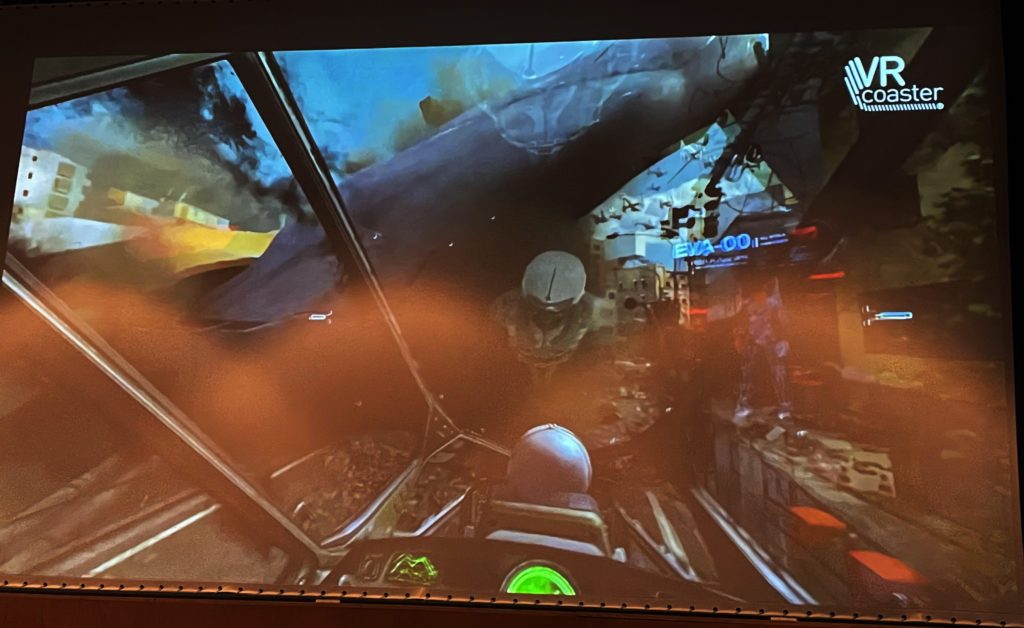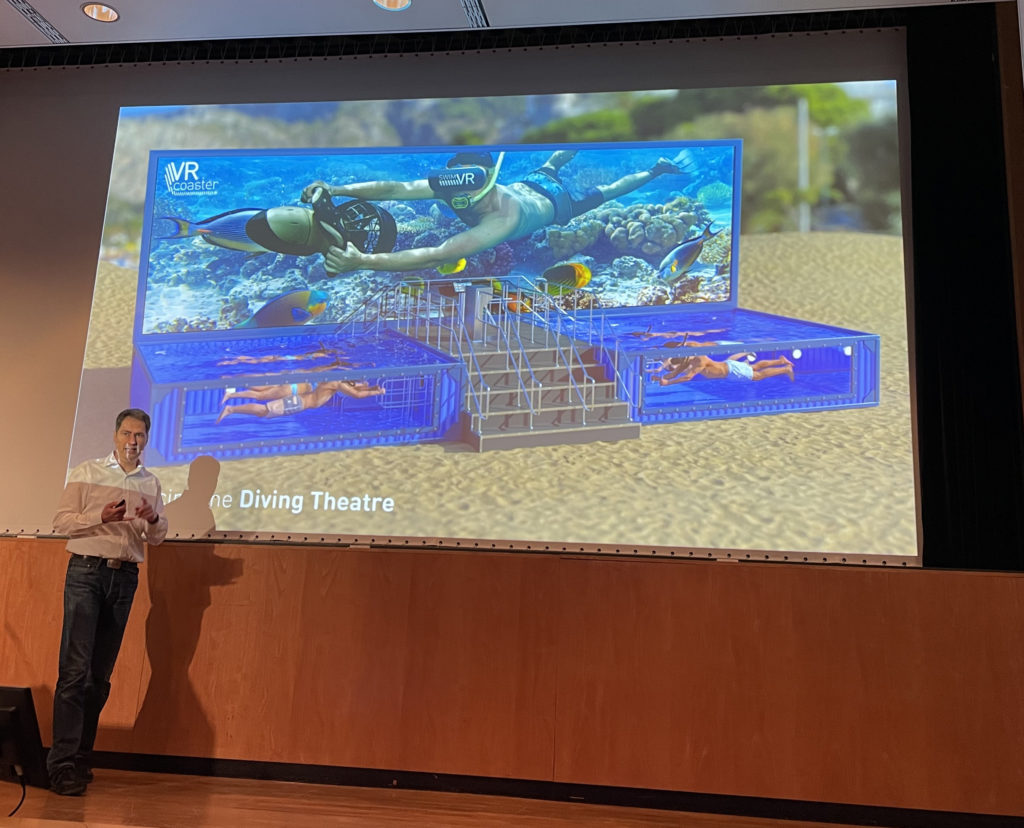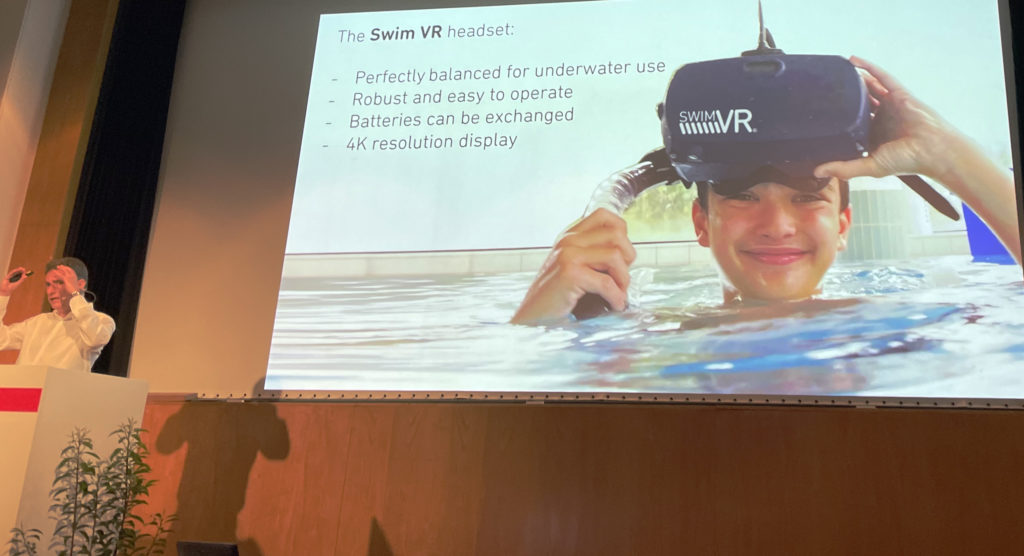The company VR Coaster introduces three VR powered products for amusement parks.
One is a VR goggle for roller coaster rides, one for underwater experiences and the last one for bumper cars.
Location-based VR creates a lot of difficulties for the developers. The mobile VR glasses have to adapt to the specific position within the roller coaster ride. And content shown reflects that. If the visitors are on an uphill ride, the images have to be exactly adjusted to this, if it is steep downhill and the speed is very high, it is the same. It is imperative that the VR glasses are adapted to the physical movements for an experience, otherwise the visitors feel sick.

The synchronisation must therefore not only be precisely adapted to the content and the physical position, above all it must be a stable image stream. Anyone who enters the VR world in combination with a real life experience the correlation of both is mandatory. Now image it is a fast track roller coaster ride. The Autor thinks this is quite a challenge. The VR experience must not be interrupted by data transmission errors. At the same time, the imagery has to be convincing, so it’s all about high-resolution life renderings.
Large quantities of high-resolution, 6 K, stereoscopic 3D panorama images, up to 100 GB for 3.5 minutes of animation, are required and are fed in at 60 frames per second. This is combined with real time objects in the foreground. The parallax becomes visible with the movement of the head. Such a set-up is only possible in the LBE, but not in an app store. Special streaming textures for light and shadow are developed for the life streamed objects. This makes the sensation unique and real.
How about hygiene issues? Specifically in amusement parks, people are quite sensitiv for these topics. No-one wants to register sweat or other remains on the VR glasses. Specifically not during covid times. Whenever a pair of glasses is put on, it means that the glasses are handed over cleaned. How is this ensured? The headsets have to withstand a lot. They are not only used frequently, they have to be adaptable to different heads and sizes, and they shouldn’t break when coincidently falling down. Whoever works with amusement parks is bound to one big maxim: Many people must be able to experience it. Because that’s the only way the effort is justified and it pays off.

The VR Coaster company has overcome these challenges. The location-based tracking was mastered by synchronising the headset with the respective ride. The vehicle tracks the position and passes the data on to the wireless headset. The VR content is then based on this. Sounds easy, but it’s hard. Such solutions are found through several iterations and trail and error. This takes time and costs money.
The environmental influences are manifold and each one has to be solved. An impressive amount of research is mastered. The entertainment industry needs new impetus and scores with technology. The fantastic VR worlds mix with movement, speed, with natural influences such as wind, sun or rain. This is special and the author assumes that these roller coaster rides with VR have a high attention potential.

This is also the case with the product „Diving Theater“. Here, the visitors go into a kind of aquarium with swimming gear and underwater VR goggles and snorkel. They are visible from the outside so that the spectators can read the fascination of the experience in the reactions and, if necessary, facial expressions of the divers. The divers hold on to special handles, a counter-current system ensures realistic sea movements and the VR glasses show detailed images of coral reefs. Swimmers or better divers are thus able to experience this unique pleasure without having to travel there. Corals are not only protected natural worlds, they are usually associated with highly expensive travel. Not everyone can or wants to afford that. „Diving Theater“ creates a valid substitute.
The VR goggles are waterproof. Images are rendered in 4 K and respond to head and body movement. It is excellent for storytelling. A giant turtle sails past the user at close range. These are moments that raises the heartbeat even in a VR environment. The environment is safe, no one has to be afraid of reality. The users know that all phenomena look realistic, but even if a shark, manta ray or moray eel comes shooting out from an invisible angle, they cannot be dangerous. They add to the thrill, but that’s all. What remains is a crazy experience, which is safe and extraordinary. Which can perhaps only be felt here.

Meanwhile: sometimes it is surprising that reality seems to be insufficient. The thrill must be greater and yet there must be no danger. Why do people seek this entertainment? Why is it not enough to swim in the sea or in a lake? That also stimulates the imagination. After all, we are all familiar with the idea of big catfish lurking at the bottom of the lake, or scary creepers that wrap around our feet and pull us unconditionally to the bottom?
Why isn’t the roller coaster ride enough? It’s insanely exciting to be pulled up and then all of a sudden rush down almost in free fall. And in these rather wacky vehicles?
Why are monsters or other phenomena demanded? Or does the industry simply want to create needs that were never formulated before? It is about a new thrill. And quite an exciting one.
Post by Prof. Ursula Drees


Comments are closed.